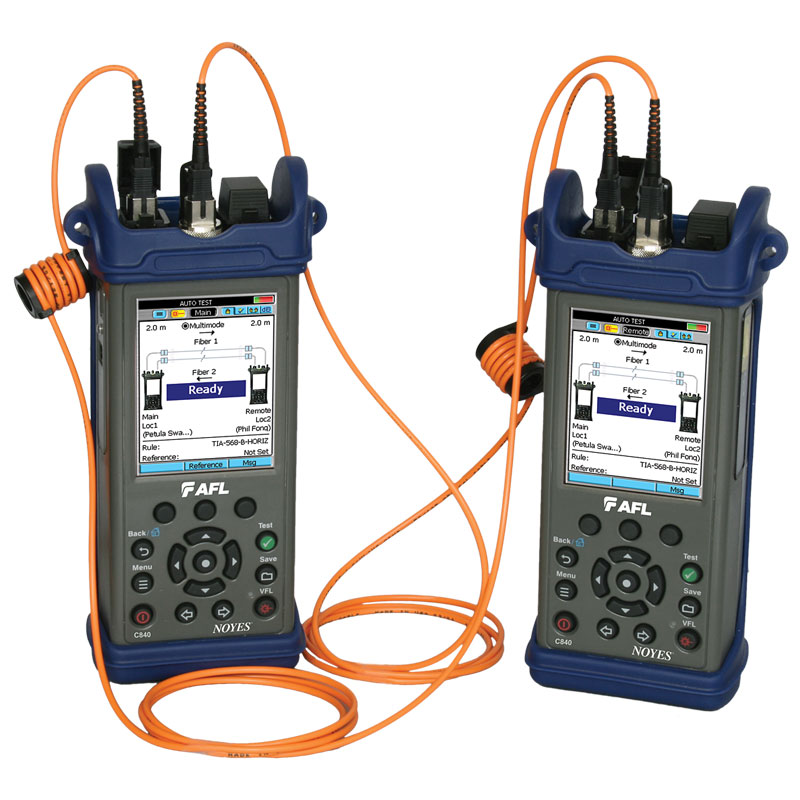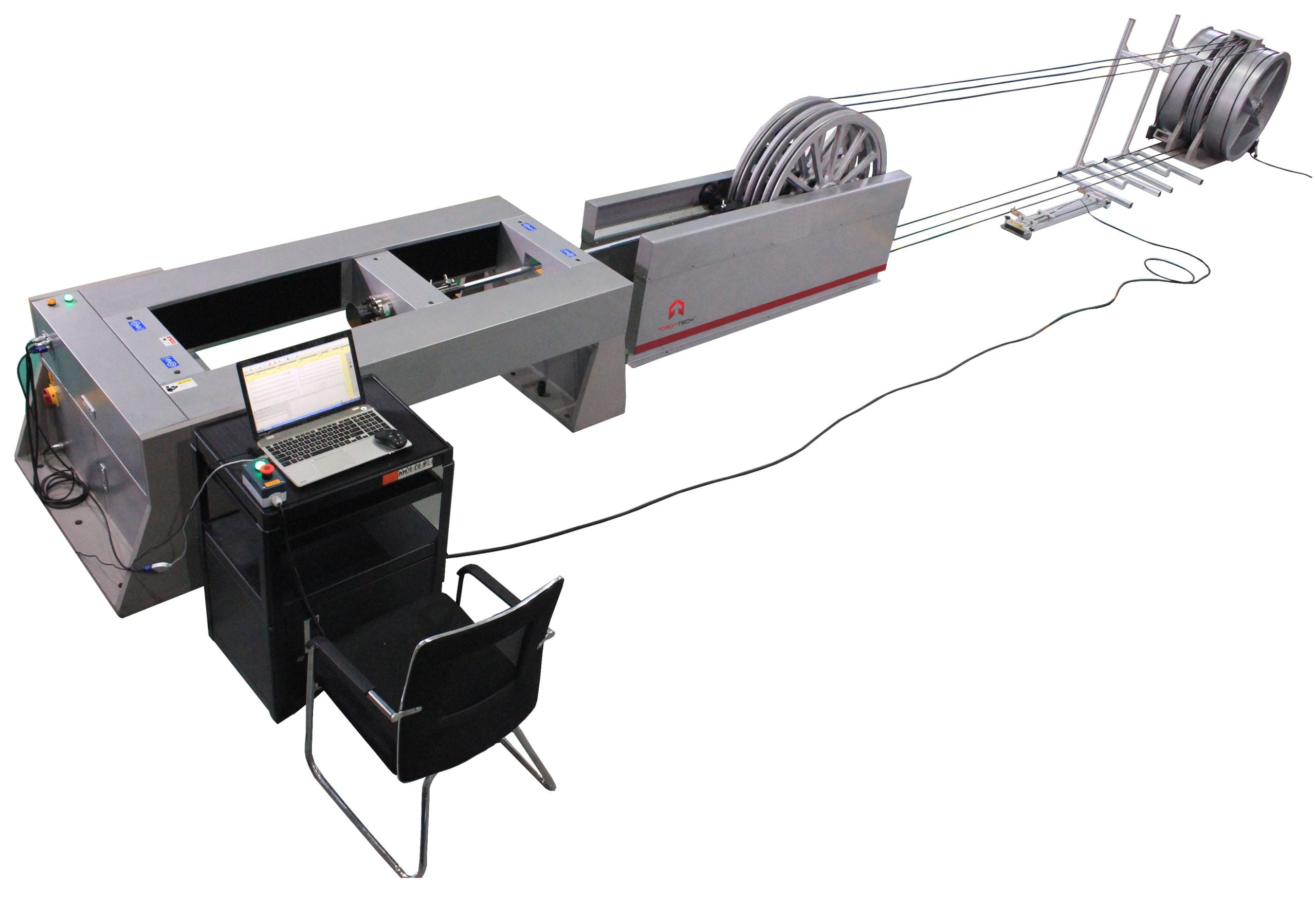Robotic vision enables automating manufacturing and quality control.
Introducing the Key Utilizes of Optical Fibre Checking for Effective Information Transmission
In the world of modern communication, optical fiber testing becomes a crucial practice for enhancing information transmission. By utilizing techniques such as Optical Time Domain Name Reflectometry (OTDR) and insertion loss analyses, network operators can properly determine and deal with concerns that may jeopardize signal integrity. As the need for faster and more trusted connections continues to climb, the ramifications of these screening strategies prolong past prompt mistake detection, influencing long-term network performance. Comprehending the diverse applications of optical fibre testing welcomes a deeper exploration into its essential role in forming the future of information communication.

Value of Optical Fibre Testing
The relevance of optical fiber testing can not be overemphasized, as it works as an important element in making certain the dependability and effectiveness of information transmission systems. In an era where high-speed interaction is paramount, any type of deficiencies in fibre optics can bring about considerable data loss and reduced efficiency. Strenuous screening procedures are necessary to validate the stability and efficiency of optical cable televisions.
Evaluating enables the identification of defects such as micro-bends, macrobends, and splice losses that could hinder signal quality. Moreover, it gives understandings right into the general depletion and transmission capacity abilities of the fiber, making certain that the network fulfills particular functional standards. Routine screening not just enhances system efficiency but likewise lengthens the life-span of the facilities by determining potential concerns before they intensify right into costly failings.

Kinds of Optical Fiber Examinations
Different types of optical fibre examinations are conducted to make certain the efficiency and dependability of fiber optic networks. These tests can be classified right into a number of key types, each serving a details objective in evaluating the honesty of the fiber.
First, Optical Time Domain Name Reflectometry (OTDR) is a popular examination that determines mistakes, interlaces, and connectors within the fiber. By sending out pulses of light and evaluating the mirrored signals, professionals can pinpoint problems along the fiber's size.
2nd, insertion loss examinations evaluate the amount of signal loss when light go through adapters or splices, which is critical for keeping network performance.
Third, return loss examinations determine the quantity of light showed back in the direction of the resource, giving understandings right into the high quality of connections and prospective sources of interference.
In addition, connection tests guarantee that the fibre path is complete, permitting professionals to confirm that the fiber is intact with no breaks. fibre testing equipment.
Finally, visual fault locators utilize noticeable light to recognize breaks or severe bends in the fiber, helping in quick troubleshooting. Collectively, these tests form a comprehensive method to maintaining optimal performance in fiber optic networks.

Applications in Network Maintenance
In contemporary telecoms, efficient network upkeep counts greatly on optical fiber screening to identify and remedy concerns promptly. Routine screening makes sure that the network operates at optimum efficiency degrees, minimizing downtime and enhancing user experience.
Among the key applications of optical fibre testing in upkeep is the detection of faults, such as breaks, flexes, or improper connections. Strategies like Optical Time Domain Name Reflectometry (OTDR) permit specialists to find these problems precisely and assess the quality of the fiber web link. Furthermore, loss screening confirms the integrity of the optical course, making sure that signal depletion stays within acceptable restrictions.
Regular upkeep screening likewise helps in safety nets, identifying prospective problems before they escalate right into substantial failings. This proactive strategy can save companies both time and financial resources. Throughout upgrades or expansions, optical fiber testing guarantees that new setups incorporate effortlessly with existing infrastructure.
Enhancing Data Transmission Integrity
Efficient network maintenance with optical fiber testing not only addresses prompt issues however additionally plays a significant duty in improving information transmission dependability. By identifying faults, determining signal loss, and analyzing the overall problem of fiber optic cables, testing makes certain that potential issues are fixed prior to they escalate into considerable disruptions.
Regular optical fibre screening, such as time-domain reflectometry (TDR) and optical time-domain reflectometry (OTDR), permits technicians to identify the precise places of breaks, flexes, or port issues within the network. This aggressive technique not just minimizes downtime but additionally optimizes the performance of data transmission by making sure that the paths for signals are clear and operating efficiently.
Furthermore, screening additional resources aids in confirming adherence to industry criteria and specs, which is crucial for maintaining the honesty of data flow. By making sure you can find out more that each connection satisfies needed limits for loss and high quality, organizations can bolster their confidence in the dependability of their data networks.
Eventually, purchasing extensive optical fibre testing not just boosts data transmission reliability but additionally sustains the long-lasting operational efficiency of interaction frameworks.
Future Patterns in Fibre Testing
Arising innovations are positioned to reinvent fiber testing, leading the way for improved effectiveness and accuracy in information transmission diagnostics (robotic vision). As the demand for faster net and higher bandwidth remains to climb, the combination of advanced devices such as fabricated knowledge (AI) and artificial intelligence (ML) is readied to transform typical fiber testing approaches. These modern technologies will certainly allow predictive maintenance and automated mistake discovery, dramatically minimizing downtime and enhancing network integrity
Furthermore, the adoption of Web of Points (IoT) devices will assist in real-time tracking of fiber networks, permitting immediate recognition of efficiency issues. This change towards proactive administration will reduce disturbances and enhance data circulation.
Furthermore, innovations in optical time-domain reflectometry (OTDR) and new screening standards will certainly boost the precision of dimensions, making certain that information stability is preserved throughout the transmission process. The advent of 5G innovation also requires the development of more innovative fibre testing strategies to support its high-speed requirements.
Verdict
Finally, optical fibre testing is crucial for maintaining effective data transmission within communication networks. By utilizing different testing techniques, such as OTDR and insertion loss examinations, potential mistakes can be identified and fixed, thereby improving signal clearness and decreasing downtime. Regular testing not only ensures compliance with industry standards however additionally helps with aggressive upkeep, why not look here ultimately adding to the lasting reliability and efficiency of fiber optic systems. The ongoing advancement of testing methods will certainly even more boost these abilities in the future.